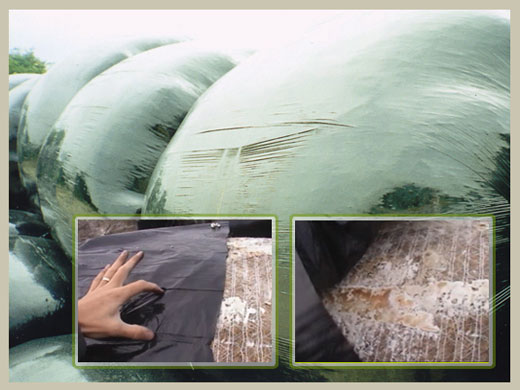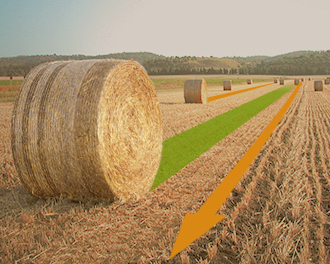FARM GROWN SOLUTIONS
It might seem a good idea to protect the straw bales from moisture and also give some UV protection to the net…
Be warned…this is inviting disaster!
The clear sheet increasing temperature and humidity inside, creating its own ’micro-climate’.
This is not good for the long-term integrity of any netwrap, which is already under pressure from the crop it contains.
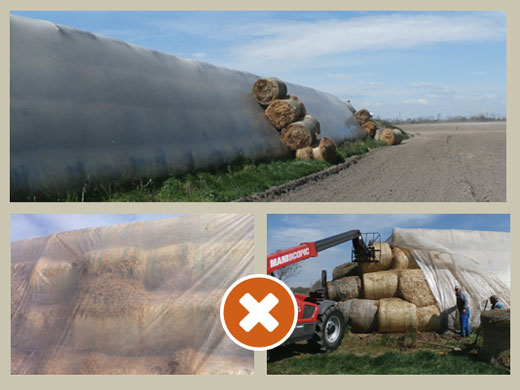
Every bird in the neighborhood will land on your bales before they are collected and stacked.
Birds landing on the bale will puncture the film, holes are made as they pull the grass through the film, causing mould inside the bale from the air that can now enter the bale.
An expensive waste of a lot of time, effort and expense.
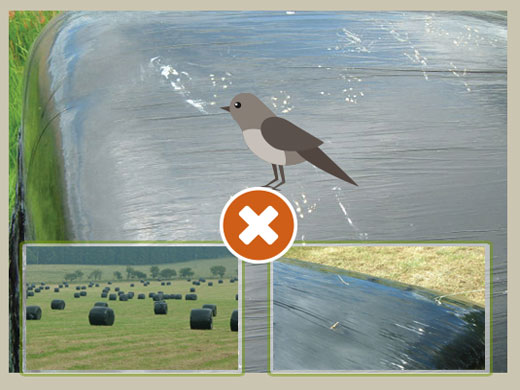
There are fewer layers of film on the sides than the ends, so it is easier to be damaged.
The bales will also quickly go out of shape, allowing water to collect between them and pulling the film over-laps apart
Never stack bales on ground that will easily be waterlogged!
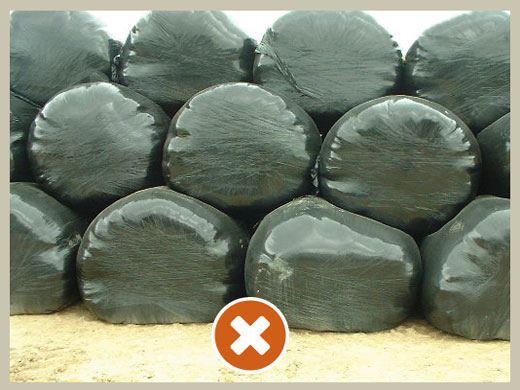
When wrapping with black film, it is impossible to see how accurate your wrapper is over-lapping the film.
Unlike white or green film, you will NEVER see the over-lap pattern in black film.
Best to check before wrapping to many bales:
Turn the bale on end, cut around the base and lift off the bale.
Climb inside the film taken from the bale and look for areas with fewer layers of film – which will be easy to see.
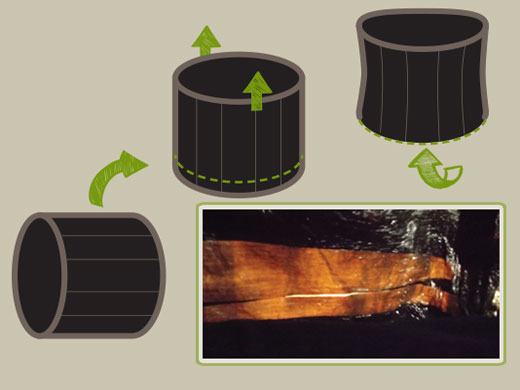
The film MUST be released by the catch and cut mechanism at the start of the new wrapping cycle…
If the knife is not sharp enough, broken or misaligned and the film does not release, it will allow air into the end of the bale, between the film layers ,resulting in poor quality silage!
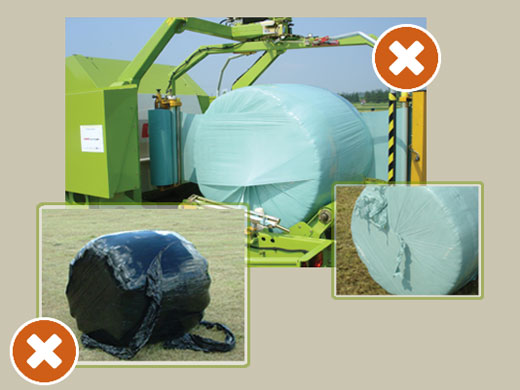
If the net does not cover Edge to Edge, the bale ‘shoulders’ that are not covered will trap air when being wrapped.
If the net does not cover Edge to Edge, trapped air will encourage mould growth and create spoilage in the bale.
Also, the un-covered ‘shoulders’ on the bale can puncture the film when the bale is being wrapped, creating more places for air to get into the bale, making the situation worse.
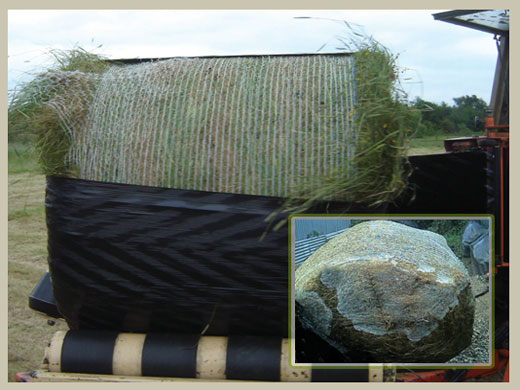
Make sure you put enough film on the bale when wrapping, as in-sufficient layers will allow air inside and mould to grow.
Make sure you put enough film on the bale when wrapping, as insufficient layers will allow air inside and mould to grow.
When using black film, it is often not easy to see how many layers have been applied to the bale and that the over-lap pattern is correct.
If it is not correct, expect poor quality silage!
